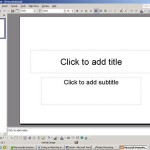Do You Play Offense or Defense?
 I’m just finishing two weeks of conferences with my students; we have been working through the drafts of their first trial briefs. One of the topics we have been talking about is how to effectively incorporate counter-analysis in a principal brief.
I’m just finishing two weeks of conferences with my students; we have been working through the drafts of their first trial briefs. One of the topics we have been talking about is how to effectively incorporate counter-analysis in a principal brief.
Before we broke for conferences, we talked about counter-analysis in class. I tried to impress upon students that they cannot be effective advocates simply by making their own affirmative arguments and ignoring their opponent’s likely arguments. Instead, they need to anticipate their opponent’s likely arguments and address those arguments as well. I get little to no push-back from the students on that point; they can see the benefit of trying to neutralize opposing arguments from the outset rather than allowing the opponent to control the arguments in the response brief.
Where students and I sometimes disagree, however, is about how best to approach counter-analysis.

